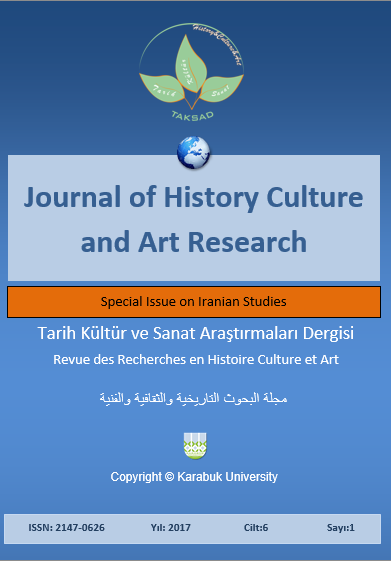Mobile Internet Usage among Adolescents and Young Adults in Iran: A Sociological Survey
DOI:
https://doi.org/10.7596/taksad.v6i1.785Keywords:
Mobile Internet, Curiosity, Confidence, Religion, Adolescent, Young adults.Abstract
This article aims to study the phenomenon of the tendency of adolescents and young adults to the mobile Internet as a social issue in the information era. The phenomenon of the Internet and the mobile Internet has risen in the developed counties as a consequence of increase in the development of electronic communication networks and it has many functions for individuals, family and society. This paper is derived from a survey research in 2013 on the status of this phenomenon in Iran. The statistical population of this research is the adolescents and young adults from 13 to 22 years old in Isfahan who have access to the mobile Internet. The sample population is 193 and the results indicate that there is an intense tendency to the mobile Internet in Iran. This seems normal in comparison with the developed countries. Also, according to the results of the study, 90.3% of adolescents and young people have mobile phones and mobile Internet and have access to the Internet mostly via the Irancell SIM cards and mobile Wi-Fi (they do not use Rightel due to the prohibition of senior clergies). Due to the easy access, the mobile Internet is their favorite. More than browsers, they use online games and social networks (especially Facebook). According to this study no social impairment (eg. Internet addiction, lack of accountability, educational impairment, social isolation, etc) because of the adolescents’ tendency to the mobile Internet was observed in them.
References
International Communication Union (2003). ITU Digital Access Index: World’s First Global ICT Ranking: Education and Affordability Key to Boosting New Technology Adoption. Press Release, Geneva, 19 November. Retrieved on 01.12.2016 http://www.itu.int/newsroom/press_releases/2003/30.html
Ishii, Kenichi (2004). Internet Use via Mobile Phone in Japan. Telecommunications Policy, Volume 28, Issue 1, pp. 43-58.
Lee, Inseong, Jinwoo Kim, Boreum Choi, & Se-Joon Hong (2010). Measurement Development for Cultural Characteristics of Mobile Internet Users at the Individual Level. Computers in Human Behavior, Volume 26, Issue 6, pp. 1355–1368.
Lin, Wan-Ying; Xinzhi Zhang; Joo-Young Jung; & Yong-Chan Kim (2013). From the Wired to Wireless Generation? Investigating Teens’ Internet Use through the Mobile Phone. Telecommunications Policy, Volume 37, Issue 8, pp. 651–661.
Lu, June; James E. Yao, & Chun-Sheng Yu (2005). Personal Innovativeness, Social Influences and Adoption of Wireless Internet Services via Mobile Technology. The Journal of Strategic Information Systems, Volume 14, Issue 3, pp. 245–268.
Sarookhani, B. (2006). Communication Sociology and Information. Etelaat, Volume 5, Autumn.
The Word Bank (2016). Internet Users: Per 100 People. Retrieved on 01.12.2016 http://data.worldbank.org/indicator/IT.NET.USER.P2?page=6&cid=GPD_44
United Nations (2015). Information Economy Report: Unlocking the Potential of E-commerce for Developing Countries. Retrieved on 01.12.2016 http://unctad.org/en/PublicationsLibrary/ier2015_en.pdf
Downloads
Published
How to Cite
Issue
Section
License
All papers licensed under Creative Commons 4.0 CC-BY.- Share — copy and redistribute the material in any medium or format
- Adapt — remix, transform, and build upon the material for any purpose, even commercially.
Under the following terms:
Attribution — You must give appropriate credit, provide a link to the license, and indicate if changes were made. You may do so in any reasonable manner, but not in any way that suggests the licensor endorses you or your use.
- No additional restrictions — You may not apply legal terms or technological measures that legally restrict others from doing anything the license permits.







